#royal belgian institute of natural sciences
Explore tagged Tumblr posts
Text
Happy #DinosaurDay #1:
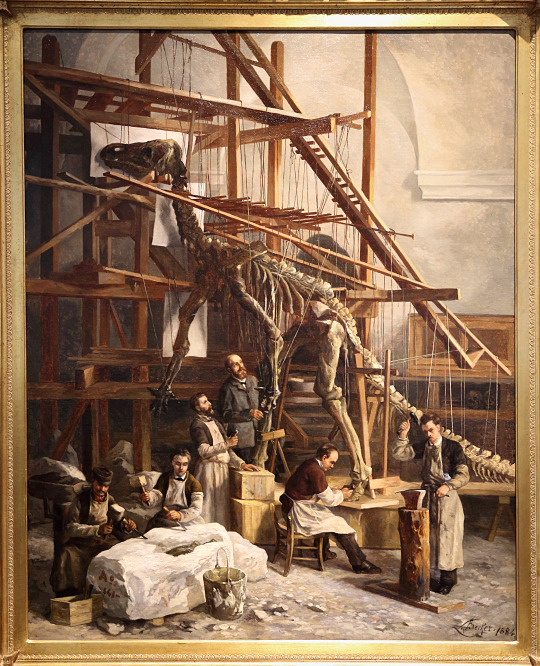
1884 painting by Léon Becker (Belgian, 1826-1909), exhibited at Royal Belgian Institute of Natural Sciences representing the mounting of the 1st Iguanodon of Bernissart at St. George Chapel in Brussels in 1882.
#animals in art#animal holiday#european art#19th century art#painting#Belgian art#natural history art#Leon Becker#Royal Belgian Institute of Natural Sciences#paleontology#history of science#dinosaur#Dinosaur Day#skeleton#Iguanodon
110 notes
·
View notes
Photo

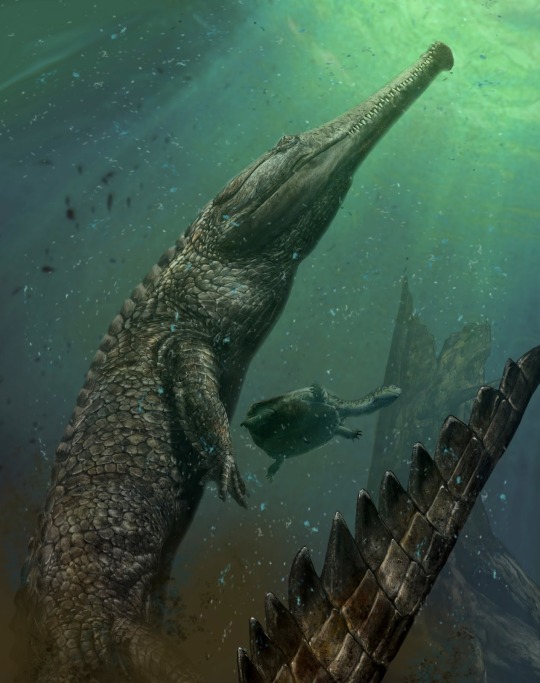
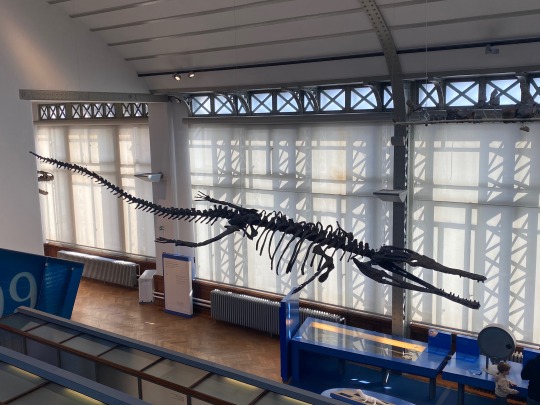
This is Machimosaurus, an impressive crocdile-like Jurassic predator from our Evolution Gallery !
Machimosaurus is a crocodyliform of the Teleosaur family, which ruled the seas and oceans from the Upper Jurassic to the Early Cretaceous.
Members of the Teleosaur family were initially more slender, with a much longer snout efficient at catching smaller preys such as fish. However, over time, Machimosaurus evolved to become particularly larger than its relatives, with a slightly shorter snout.
Semi-aquatic, Machimosaurus was able to venture ashore to hunt. However, this exceptional swimmer was a master of deep-sea hunting. In the water, it used its short legs to steer and to keep balance, while its robust tail allowed Machimosaurus to propel itself.
Other distinguishing features of this species were its massive skull and long snout. Using its conical, rounded teeth and an overpowering jaw force, Machimosaurus was able to target larger or shelled prey: fish, turtles and other marine reptiles, as well as some overly adventurous terrestrial species had to be especially cautious of this fierce predator.
Fossils of this 100-million-year-old giant have been discovered in several countries across Europe and Africa. These findings have allowed palaeontologists to separate, to this date, the lineage of Machimosaurus into five probable species.
One of these, the Machimosaurus rex recovered from a desert in Tunisia in 2016, could be the largest member of this lineage. According to various estimates, this animal could have grown up to more than 7 metres in length, for 3 tonnes: not the kind you'd want to meet in a face-off!
[Picture by visitor Merle Van Faassen, and Machimosaurus Rex illustration by Davide Bonadonna]
#naturalscience#naturalsciences#natural history#natural history museum#machimosaurus#jurassic#cretaceous#museumvisitor#naturalsciencesbrussels#royal belgian institute of natural sciences
50 notes
·
View notes
Text
In a discovery by researchers from Leiden University in the Netherlands, offshore wind turbines have become a haven for benthos — the community of marine organisms that live in, on or around the seafloor.
There are more soil animals per square meter living in the foundations of offshore wind farms than on the floor of the North Sea, a press release from Leiden University said.
“The turbine foundations provide hard substrate for settlement in areas where these habitats have never been present before. Except for islands, there are now structures spanning the entire range from sea floor to sea surface,” Jan Vanaverbeke, a postdoctoral researcher at the Royal Belgian Institute of Natural Sciences, told EcoWatch in an email. “A lot of organisms, normally living on hard substrates (rocks, bio- or geogenic reefs) have larvae with pelagic stadia, drifting in the water column and trying to find a suitable place to settle and grow into an adult. The turbines provide such substrate in areas where it has never been present before.”
In the area surrounding the wind farms, fishing is not allowed, meaning fish can flourish.
“Banning fisheries from offshore wind farms has positive effects as (1) wind farms provide a safe place for fish (where some species find a lot of food), and (2) the sea floor is not disturbed and therefore long-living animals have a chance to actually live long (they are not impacted/killed by the fishing gear that is passing),” Vanaverbeke told EcoWatch.
#good news#nature#animals#science#ocean life#marine life#environmentalism#conservation#environment#wind farm#wind energy
435 notes
·
View notes
Text
Archaeologists in Belgium have uncovered traces of weld, madder, and woad—the three primary dye plants used in medieval textile production—during excavations in Brussels and Mechelen. While these plants were crucial to the dyeing industry, physical evidence of their use is rare.
“This is the first time we’ve found the three primary medieval dye plants together in Belgium,” says Lien Speleers, an archaeologist at the Royal Belgian Institute of Natural Sciences.
Weld (Reseda luteola), madder (Rubia tinctorum), and woad (Isatis tinctoria) were fundamental to medieval cloth production, producing yellow, red, and blue dyes respectively. “Weld produced yellow, madder red, and woad blue, but the techniques for obtaining these colors were very different,” explains Speleers. “These three plants formed the basis of the primary colors. They were often combined to create other shades like green, orange, purple, and even black.”
20 notes
·
View notes
Text
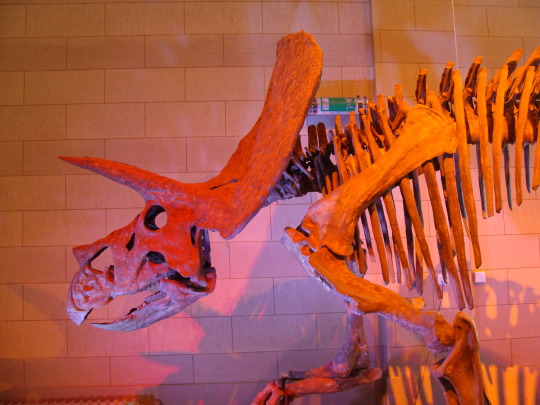
Some bi lighting for another super bizarre triceratops cast(?) on display at the Royal Belgian Institute of Natural Sciences. No idea what it's based on, but it doesn't look quite natural to me.

37 notes
·
View notes
Text
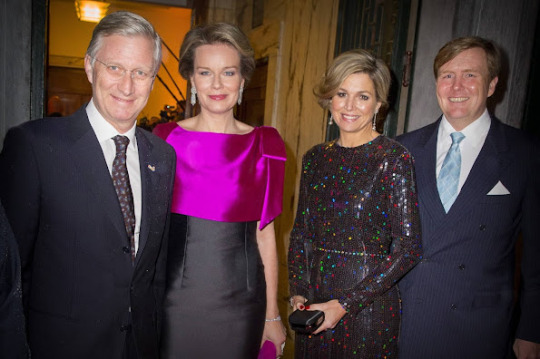
State visit to Belgium – programme
His Majesty King Willem-Alexander and Her Majesty Queen Máxima will be paying a state visit to Belgium at the invitation of His Majesty the King of the Belgians. The visit will start in Brussels on the morning of Tuesday 20 June and end in Antwerp on the evening of Thursday 22 June. The King and Queen will be accompanied by Minister of Foreign Affairs Wopke Hoekstra on the first and third days of their visit. Minister of Education, Culture and Science Robbert Dijkgraaf will accompany them on the second day. Minister for Foreign Trade and Development Cooperation Liesje Schreinemacher, Minister of Agriculture, Nature and Food Quality Piet Adema, Minister of Infrastructure and Water Management Mark Harbers, Minister of Defence Kajsa Ollongren, Minister of Social Affairs and Employment Karien van Gennip and Minister of Economic Affairs and Climate Policy Micky Adriaansens will each be attending separate parts of the programme.
The state visit will reaffirm the excellent ties between the two neighbouring countries, which have strong historical, social and economic links. Key common themes during the visit will be improving social and physical liveability, combating climate change, maintaining and promoting a safe society and working towards a sustainable future in which energy is green and affordable. The visit will further deepen the close collaboration between the Netherlands and Belgium, as they both work towards a safer, cleaner and more sustainable future.
Tuesday 20 June – Brussels
Morning
Arrival at Brussels Midi train station
The state visit will begin in Brussels, with the King and Queen arriving by royal train at Brussel Midi station where they will be welcomed by the Belgian foreign minister.
Welcome ceremony
King Philippe and Queen Mathilde will receive King Willem-Alexander and Queen Máxima at a welcome ceremony at the Royal Palace.
Afternoon
Wreath-laying ceremony
Following the welcome ceremony at the palace, the King and Queen of the Netherlands will lay a wreath at the Tomb of the Unknown Soldier. This monument commemorates all unidentified Belgian soldiers who fell during the First World War.
Federal Parliament
Following a lunch at the Royal Palace, King Willem-Alexander and Queen Máxima will visit the Federal Parliament of Belgium. They will speak with members of the Chamber of Representatives and the Senate before being given a tour of the building.
Meeting with the Prime Minister
The King and Queen will then meet with Prime Minister Alexander de Croo at Lambermont, his official residence.
Meeting with the mayor of Brussels and walkabout in Grand-Place
Later that afternoon both royal couples will be received by the mayor of Brussels, Philippe Close, at the town hall. During a walkabout in Grand-Place square the royal party will then have the opportunity to meet inhabitants of Brussels and tourists.
Evening
State banquet
In the evening King Philippe will host a state banquet at the Castle of Laeken, at which both heads of state will give a speech.
Wednesday 21 June – Brussels, Ottignies-Louvain-la-Neuve, Waterloo and Charleroi
Morning
Climate Tech Forum
The second day of the visit will begin at the Climate Tech Forum, part of the parallel economic mission headed by foreign trade minister Liesje Schreinemacher. The event will be attended by some 500 representatives of Belgian and Dutch knowledge institutions, businesses and public sector bodies. They will be exchanging knowledge and exploring opportunities for cooperation on green hydrogen, climate neutral construction, future-proof agriculture and horticulture, and smart, sustainable mobility. The royal party will also visit an innovation market highlighting Belgian-Dutch collaborations and attend part of the plenary programme. King Philippe and King Willem-Alexander will each give a short speech.
Aerospacelab
King Philippe and King Willem-Alexander will visit Aerospacelab in Ottignies-Louvain-la-Neuve which specialises in satellite data, and in designing, testing and producing satellites. They will be given a tour, visit the cleanroom and meet members of staff.
Queen Elisabeth Music Chapel
Queen Mathilde and Queen Máxima will visit the Queen Elisabeth Music Chapel in Waterloo. Each year the institution hosts approximately 70 international young musicians, who follow a programme of lessons, concerts and recitals, work with orchestras and participate in festivals. Queen Mathilde and Queen Máxima will meet several of the musicians, attend performances and be given a tour.
Afternoon
Lunch meeting on water management
The royal party will attend a lunch in the orangery at the Castle of Seneffe, at which Belgian and Dutch experts will give presentations on addressing the risks of drought and flooding.
BioPark Charleroi
In the afternoon the party will visit BioPark Charleroi, a biotech ecosystem where businesses and knowledge institutions conduct research on life sciences and develop solutions to challenges in healthcare.
Unveiling of comic mural and comic strip workshop
On arrival in Charleroi the royal party will walk to the Institut Saint-André school, while greeting the public. Outside the school they, and a number of pupils, will unveil a mural designed by the Dutch comic book artist Dido Drachman and Belgian graphic novel artist Christian Durieux. They will then participate in a comic strip workshop together with pupils from the school. The unveiling of the mural and the comic strip workshop will mark the end of a cultural festival involving Belgian and Dutch artists.
Evening
Concert
In the evening King Willem-Alexander and Queen Máxima will host a concert by the Amsterdam Sinfonietta string orchestra at the Flagey culture house in Brussels to thank their hosts for their hospitality.
Thursday 22 June – Leuven and Antwerp
Morning
Imec
The third day of the state visit will begin in Leuven, where King Philippe, Queen Mathilde, King Willem-Alexander and Queen Máxima will visit Imec, a research centre specialising in chip technology that supports companies developing digital applications. The royal party will attend a roundtable meeting with the CEOs of Imec’s Belgian and Dutch partners.
Royal Museum of Fine Arts Antwerp
King Philippe, Queen Mathilde, King Willem-Alexander and Queen Máxima will start their visit to Antwerp with a walk to the Royal Museum of Fine Arts (KMSKA). They will have the opportunity to meet the people of Antwerp along the way. The royal party will be given a tour of the museum, which boasts a collection representing seven centuries of art. The museum’s recent renovation was overseen by Dutch architect Dikkie Scipio. Its collection includes highlights of Flemish Baroque as well as examples of primitivism and expressionism, and features works by Peter Paul Rubens, James Ensor and Rik Wouters.
Afternoon
Lunch meeting on early school leavers and youth unemployment
After the museum tour the royal party will attend a lunch meeting on the theme of tackling youth unemployment. Many young people in Antwerp leave school without a qualification, while at the same time there are a large number of unfilled job vacancies at secondary vocational level. At the lunch young people will be sharing their experiences and speaking with researchers about the role of educational institutions and employers in guiding vulnerable young people and their development.
Port Authority Building
After the lunch meeting the royal party will be given a short tour of the Port Authority Building and will speak with CEOs and participants of the Belgian-Dutch Port Open Day being held in the Port of Antwerp. They will look at how ports and their industrial clusters can work together to achieve shared ambitions relating to the energy transition, and the infrastructure this requires.
Belgian and Dutch frigates
In the Port of Antwerp King Philippe and King Willem-Alexander will visit the Belgian frigate Louise-Marie, while Queen Mathilde and Queen Máxima visit the Dutch frigate HNLMS De Ruyter. There will be various demonstrations on board and on shore. This part of the programme will focus on the partnership between the Belgian and Dutch navies. The Royal Netherlands Navy and the Belgian Navy operate the same types of ships and helicopters, cooperate on maintenance and carry out joint exercises. Following the visit to the frigates, a farewell ceremony will be held on shore.
Reception for the Dutch community
At the end of the afternoon a reception for the Dutch community in Belgium will be held in the historic Handelsbeurs, Antwerp’s former stock exchange.
Government Information Service, no. 145
20 notes
·
View notes
Text
Brussels is home to many fantastic museums! Here are some of the top-rated ones you might want to check out:
Royal Museums of Fine Arts of Belgium (RMSAFB): This group of museums includes the Magritte Museum, Old Masters Museum, Wiertz Museum, and Meunier Museum. It's a must-visit for art lovers.
Belgian Comic Strip Center: Brussels is known as the comic book capital of the world, and this museum celebrates that heritage with exhibitions on famous Belgian comics like Tintin and The Smurfs.
Horta Museum: Located in the former home and studio of architect Victor Horta, this museum showcases his work and the Art Nouveau style](https://www.hortamuseum.be/fr/Accueil).
Natural Sciences Museum: This museum is attached to the Royal Belgian Institute of Natural Sciences and features fascinating exhibits like the Dinosaur Gallery and the Gallery of Evolution.
Musée Magritte Museum: Dedicated to the famous Belgian surrealist painter René Magritte, this museum houses the largest collection of his works.
Mini-Europe: Located on the Heysel Plateau, this outdoor museum features miniature replicas of famous European landmarks, including a detailed model of Brussels' Grand Place.
Choco-Story Brussels: For chocolate lovers, this museum offers a fascinating look into the history of chocolate-making and includes chocolate-making demonstrations.
These museums offer a mix of art, history, science, and culture, ensuring there's something for everyone. Do any of these museums catch your interest?
0 notes
Link
On Earth, there is a phenomenon known as nightglow, where the atmosphere experiences faint light emissions that prevent the night sky from becoming completely dark. This is caused by various processes in the upper atmosphere, like the recombination of atoms, cosmic rays striking the atmosphere, or oxygen and nitrogen interacting with hydroxyl a few hundred kilometers from the surface. Thanks to data obtained by the ESA’s ExoMars Trace Gas Orbiter (TGO), the same phenomenon has been observed in the Martian atmosphere for the first time. While scientists have long suspected that Mars also experiences this atmospheric phenomenon, this is the first time that effectively proves it. The revelation was made by an international team of scientists based on their analysis of data from the TGO’s Nadir and Occultation for MArs Discovery (NOMAD) spectrometer. When astronauts and rovers explore Mars’ polar regions in the near future, they will see a green glow whenever they look up at the sky and could even use the glow to navigate and find their way in the dark of night. The study was led by Jean-Claude Gérard, a Professor at the University of Liege’s Laboratory for Planetary and Atmospheric Physics/Star Research Institute (IPAP-STAR). He was joined by researchers from the Royal Belgian Institute for Space Aeronomy (BIRA-IASB), the School of Physical Sciences at The Open University, and the Instituto de Astrofìsica de Andalucía (IAA-CSIS). The paper that describes their findings, titled “Observation of the Mars O2 visible nightglow by the NOMAD spectrometer onboard the Trace Gas Orbiter,” recently appeared in Nature Astronomy. The atmospheric nightglow occurs on Mars when elemental oxygen combines to form oxygen gas (O2) about 50 km (31 mi) above the planetary surface. These atoms originate on Mars’ dayside, where sunlight excites carbon dioxide molecules and causes them to split into their constituent components. When they migrate to the night side and are no longer energized by the Sun, they regroup and emit light at lower altitudes. The illumination could be bright enough to navigate by, as bright as moonlit clouds on Earth. Nightglow is not to be confused with auroras, which result from energetic electrons from the Sun interacting with Earth’s magnetic field and upper atmosphere. A similar process occurs on Mars, resulting from solar electrons striking the upper atmosphere. While aurorae vary across space and time, nightglows are more homogeneous, both can display a wide range of colors depending on which atmospheric gases are most abundant at different altitudes. Astronauts routinely observe nightglow edge-on in Earth’s atmosphere from the International Space Station (ISS) and have taken breathtaking pictures of them. The international team was motivated by previous observations made by the ESA’s Mars Express, which observed the nightglow above the planet’s limb on three occasions (in 2004, 2005, and 2006, respectively). These events were spotted during a series of 40 infrared observations made by the Mars Express Observatoire pour la Minéralogie, l’Eau, les Glaces et l’Activité (OMEGA) imaging spectrometer, provided by the French Space Agency – Centre National D’Etudes Spatiales (CNES). The TGO followed this up by capturing the dayglow high above the dayside of Mars in 2020 with its NOMAD instrument. “This emission is due to the recombination of oxygen atoms created in the summer atmosphere and transported by winds to high winter latitudes, at altitudes of 40 to 60 km in the Martian atmosphere,” said co-author Lauriane Soret, a researcher from the IPAP at the University of Liège, in a recent ESA press release. “These observations are unexpected and interesting for future trips to the Red Planet,” added lead author Gérard. The NOMAD experiment is led by researchers from the BIRA-IASB in collaboration with teams from Spain (IAA?CSIC), Italy (INAF?IAPS), the United Kingdom (Open University), and others. The instrument covers a spectral range from about 100 to 700 nanometers, corresponding to the near ultraviolet to red light wavelengths. It was also oriented towards the edge of the Red Planet while the TGO was orbiting at an altitude of 400 km (250 mi), allowing it to better observe the upper atmosphere on the night side of Mars. This data could provide valuable insight into the Martian atmosphere, providing a wealth of information about the composition, dynamics, and oxygen density of a region that is difficult to measure. It can also reveal how sunlight and solar-charged particles (aka. solar wind) deposit energy into the atmosphere. This information is essential when planning future missions to Mars, especially where atmospheric density is concerned, which affects the drag experienced by orbiters and the parachutes used to deliver robotic missions to the surface. Yet again, these findings demonstrate that Mars and Earth share some key similarities arising from their similar compositions (terrestrial or rocky) and the dynamic processes that drive their atmospheres. In the near future, multiple space agencies hope to send crewed missions there to conduct in-depth research that will likely reveal that our two planets have had similar pasts. These missions may also reveal evidence of past life on Mars and possibly evidence that life still exists there today! Further Reading: ESA, Nature Astronomy The post Martian Green Nightglow Seen for the First Time appeared first on Universe Today.
0 notes
Text
Fwd: Conference: Ingelheim.EvolutionUnisexualReproduction.Jul1-13
Begin forwarded message: > From: [email protected] > Subject: Conference: Ingelheim.EvolutionUnisexualReproduction.Jul1-13 > Date: 1 May 2023 at 05:18:36 BST > To: [email protected] > > > > Registration and abstract submission for the Gutenberg Workshop on > the Evolution of Unisexual Reproduction, July 11-13, 2023, Ingelheim is > now open > > REGISTER > AND SUBMIT AN ABSTRACT NOW! > > Registration closes May 18, 11:00pm (CEST). > > Evolution of Unisexual Reproduction > > While the topic of unisexual reproduction has fascinated many of us > for a long time, recent advances from diverse systems make this a great > time to bring a group of scientists together who have moved the field > forward and will enjoy scientific exchange and discussions. In addition > to an emphasis on having diverse systems represented at the workshop, > we are also looking forward to the exchange between those focused on > experimental and modelling approaches. > > Confirmed Speakers > > Tuliana Brunes, U of Texas at Arlington, USA > > George Constable U of York, UK > > Susanne Foitzik, JGU Mainz, GER > > Matthew Hartfield, U of Edinburgh, UK > > Michael Kearney, U of Melbourne, ASTL > > Craig Moritz, ANU, ASTL > > Manfred Schartl, U of W??rzburg, GER > > Ingo Schlupp, U of Oklahoma, USA > > Isabelle Sch??n, Royal Belgian Institute of Natural Sciences, BE > > Tanja Schwander, Universit?? de Lausanne, CH > > Sen Xu, U of Texas at Arlington, USA > > Scientific Organizers > > Anthony Barley, ASU, USA > PeterBaumann, JGU Mainz, GER > Hanna Kokko, JGU Mainz, GER > > Anthony Barley
1 note
·
View note
Text
Scientists Discover Mysterious Ice Age Structure Built from Bones of 60 Mammoths in Russia
[ad_1]
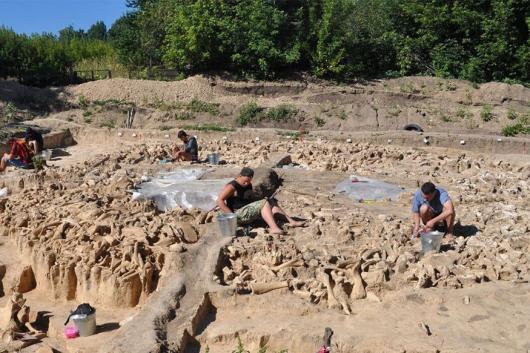
(Image credit: Twitter/@pourmecoffee)
The excavation revealed that the structure was built with mammoth bones, dated 20,000 years ago. The structure also included reindeer, horse, bear, wolf, red fox and arctic fox bones.
Trending Desk
Last Updated: March 19, 2020, 7:01 PM IST
We are equipped with a number of facilities and services today to adapt ourselves…
View On WordPress
#Antiquity#bones of mammoths#ice age#Kostenki Museum-Preserve#mammoths#mysterious ice structure#Royal Belgian Institute of Natural Sciences#Russia#Ukraine
0 notes
Photo
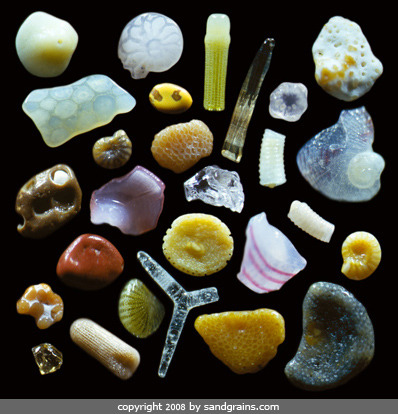
A Grain of Sand
Sand is soft, scratchy, in all the wrong places, and boring... or is it? Each minute sand grain has a remarkable history with roots in diverse geological processes, from explosive volcanic eruptions, to the formation and destruction of intricate sea shells. Each grain is somewhere on its journey from formation to destruction, and will eventually be re-cycled by the planet's huge, slow chemical and physical cycles. These journeys are captured in the spectacular work of Dr Gary Greenberg, who has been photographing sand for decades. The sand grains in this picture are from Maui, and are mainly the remains of living creatures, some more intact than others. Just in these few grains there are fragments of corals, sea urchins, bivalves, gastropods, bryozoans and encrusting algaes, there are near-complete foraminifera and the skeleton of a juvenile sponge (the three-pronged structure), as well as a few grains of 'terrigenous' material - ground up rocks from the land.
OB
Image Source: http://sandgrains.com/ (with permission)
More about Sand from The Earth Story: - 'Sand Star Beach': http://goo.gl/4g4EIu - A 'Sand Tsunami': http://goo.gl/eQ84G5 - The mineralogical side of sand: http://goo.gl/Vjyfuc - Wind erosion of sand: http://goo.gl/4TiwGr - A pufferfish's sand garden: http://goo.gl/0mRDDa
#text message#royal belgian institute of natural science#shell#photography#mauritius#hawai#fossil#geology#rock#sediment#the earth story
658 notes
·
View notes
Text
Pterosaurs May Have Had Brightly Colored Feathers, Exquisite Fossil from Brazil Reveals
An amazingly well-preserved fossil suggests the common ancestor of dinosaurs and pterosaurs also had some type of feather or feather precursor
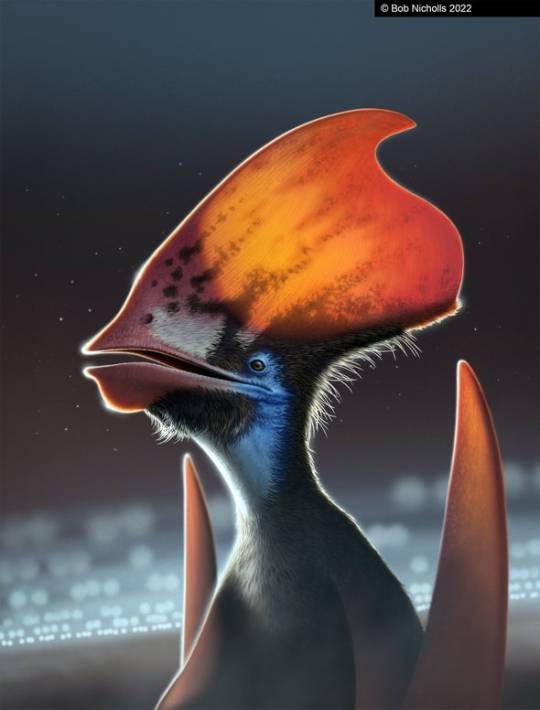
Long before the first birds flapped and fluttered, pterosaurs took to the skies. These leathery-winged reptiles, their bodies coated with wispy filaments paleontologists call pycnofibers, were the first vertebrates to truly fly. Now experts are beginning to think pterosaurs and birds had more in common than previously assumed: An exquisitely preserved fossil from Brazil not only hints that pterosaurs’ peculiar filaments may have been true feathers but also suggests that this plumage could possibly have been as riotously colored as that of any modern toucan or tanager.
The fossil, described on Wednesday in a new study in Nature, is a pterosaur called Tupandactylus imperator that was found in the Early Cretaceous limestone of Brazil’s Crato Formation. “What is remarkable about this specimen—and very obvious when you look at it—is the fact that it preserves extensive soft tissues,” says study co-author Maria McNamara, a paleobiologist at University College Cork in Ireland.
This specimen has a vague and complicated history. It is unclear who found the fossil or when they did so, but it wound up in the hands of a private collector and was later given to the Royal Belgian Institute of Natural Sciences. At that point, paleontologist Edio-Ernst Kischlat “was then contacted to find an official agreement with Brazilian authorities and the Embassy of Brazil in Brussels,” says the new study’s lead author Aude Cincotta, now at the Belgian institute.In October 2021 the institute signed a deal with the Brazilian embassy to repatriate the fossil, and it arrived at Rio de Janeiro’s Museum of Earth Sciences in February of this year.
Whatever the story behind the pterosaur fossil, leaving private hands to a secure place in a museum allowed it to finally be described. Initially, McNamara says, she and her colleagues studied the specimen with an eye toward identifying the details of its remarkably clear soft tissues. The researchers were not necessarily looking for clues to color, she notes—but she says they were “delighted” to find such evidence in the form of microscopic structures called melanosomes.
Melanosomes’ shape and density, as well as their distribution in skin, feathers and other tissues, help create what biologists know as structural colors: hues that range from rust red to oil-slick iridescent and that are created by the way light interacts with the feathers. (These structures can only provide a partial picture of an animal’s coloration, however, because many shades are created chemically.) McNamara and her co-authors found different melanosome shapes in Tupandactylus’s skin and in two types of the fluffy, featherlike filament structures along its skull, implying the colors in each would have been different from one another.
Continue reading.
@mindblowingscience
#brazil#science#biology#paleontology#dinosaurs#defend brazilian science#mod nise da silveira#image description in alt
214 notes
·
View notes
Text
youtube
COLOSSAL ANCIENT WHALE COULD BE THE HEAVIEST ANIMAL EVER!
Perucetus colossus, an ancient whale that swam off the coast of present-day Peru 39 million years ago, rivals the blue whale as the heaviest animal ever. A blue whale can weigh up to 100-190 tonnes, but the newly described extinct marine mammal weighed between 85 and 340 tonnes, estimate palaeontologists in a study published in the journal Nature.
‘The discovery pushes extreme growth in whales to a much earlier phase in their evolution than previously thought’, says paleontologist and co-author Olivier Lambert from the Royal Belgian Institute of Natural Sciences.
Read more on our website: www.naturalsciences.be
36 notes
·
View notes
Photo
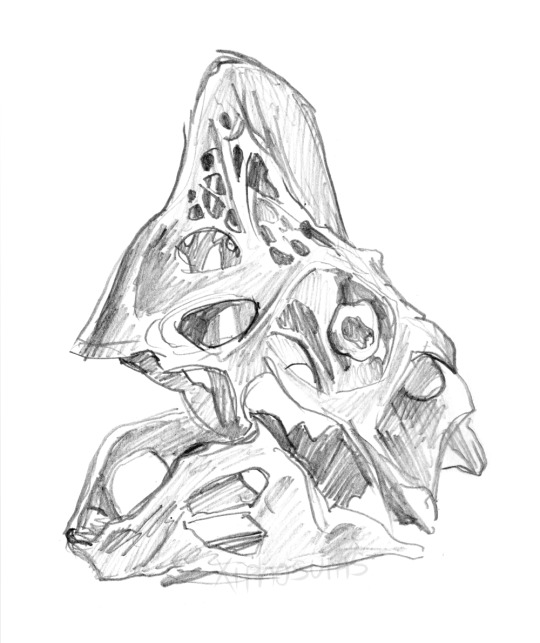
Visited the Royal Belgian Institute of Natural Sciences in Brussels with a friend of mine who lives there :) Naturally we had to draw fossils and taxidermied animals.
Here is the skull of an oviraptor. I’m probably going to ink this one later.
#oviraptor#oviraptor art#dinosaur art#dinosaur drawing#paleoart#sketch#Observational Drawing#prehistoric#animals
13 notes
·
View notes
Text
Pterosaurs may have flaunted colorful plumage long before the reign of dinosaurs | Science

The idea that dinosaurs sported colorful feathers, once outlandish, has become conventional wisdom. Now, a new study of a Brazilian fossil suggests that pterosaurs—leathery winged, flying reptiles only distantly related to dinosaurs—were also clad in tiny feathers of varying hues. The finding suggests feathers may have evolved more than 150 million years before the heyday of the dinosaurs, probably for display, the authors say. “In their very earliest forms, feathers were colored … presumably for signaling,” says paleobiologist Maria McNamara of University College Cork, who led the study.
The paper “reinforces the idea that pterosaurs were ‘fluffy,’ and indicates at least some of them probably had complex colorful patterns—which is fantastic,” says Rodrigo Pêgas, a paleontologist at the Federal University of ABC, São Bernardo do Campo, in Brazil. But Pêgas is not convinced that feathers originated as early as McNamara thinks—and some other researchers doubt the structures are feathers at all.
How feathers arose has been a big question in paleontology for more than 150 years, since the first Archaeopteryx—a feathered dinosaur once thought to be the first bird—was found in Germany. Many researchers think feathers arose for insulation and were co-opted only much later for flight and other uses, such as courtship displays. As for pterosaurs, researchers had previously reported their bodies were covered in pycnofibers, single-stranded structures that formed a “fuzz,” presumably for warmth.
Then in 2018, McNamara and her colleagues reported that two well-preserved Chinese pterosaurs showed what seemed to be a defining feature of feathers: a central shaft with branches. Some paleontologists were skeptical, and McNamara says she understood why. “Their feathers were—to be honest—a bit weird,” she says. “They didn’t branch like modern bird feathers do.”
Now, she and her colleagues have cemented their arguments with a paper this week in Nature analyzing the soft tissue of an exquisitely preserved skull of Tupandactylus imperator—a pterosaur that had a majestic head crest and a 5-meter wingspan. It lived 113 million years ago in what is now the Araripe Basin in northeastern Brazil, although McNamara studied the fossil in Belgium. The team thinks it was poached from Brazil and kept in private collections until recently. Earlier this year, the Royal Belgian Institute of Natural Sciences repatriated the fossil to Brazil, where it will be displayed at the Earth Sciences Museum in Rio de Janeiro. “It is great that the fossil is back in Brazil,” Pêgas says.
On the pterosaur’s head crest, the researchers identified both single-stranded fibers and featherlike branching ones with a central shaft narrowing at the base. Under the scanning electron microscope, both skin and feathers had melanosomes, intracellular structures containing melanin that give pigment to skin, feathers, and fur in living animals, with differently shaped melanosomes conferring different colors. The pterosaur’s melanosomes had diverse shapes—ovoid, spherical, and elongated—something until now only seen in mammalian fur and dinosaur and bird feathers.

Tupandactylus imperator, a large pterosaur that lived in what is now Brazil, may have sported a colorful head crest, as seen in this artist’s illustration.© Bob Nicholls 2022
The researchers think Tupandactylus’s colored, branching structures were indeed feathers, which both kept it warm and enabled it to signal to other pterosaurs, perhaps as male peacocks do by displaying plumage during mating.
The finding means feathers must have evolved far earlier than was thought, McNamara says. “The most parsimonious explanation is that feathers were present in the common ancestor of [pterosaurs and dinosaurs],” about 250 million years ago during the Triassic period.
Some paleontologists say the evidence of feathers is persuasive. “We’re hammering it in with 7-inch nails with these findings,” says Jakob Vinther, a paleobiologist at the University of Bristol. Paleontologist Michael Benton, also at Bristol, agrees, but “I don’t think pterosaur feathers had any function in flight because they’re just fluffy little feathers.”
But paleontologist David Martill from the University of Portsmouth says the small branched structures “look nothing like feathers.” He thinks they are a different kind of keratinous covering, though he agrees they were probably spectacularly colored.
Even if they are feathers, pterosaurs may not have flaunted them like Mesozoic peacocks, Vinther says. He notes that the researchers didn’t infer the melanosomes’ color and says it’s possible the plumage was used for camouflage rather than display.
Nor is it certain that the pterosaur structures share an ancient origin with those of dinosaurs and their descendants, living birds, some researchers say. “We still need fossil evidence for feathers in the Triassic as well as unequivocal molecular evidence for the common origin between pterosaur pycnofibers and dinosaur feathers,” Pêgas says.
McNamara promises more evidence for her scenario. Her team is working to characterize the detailed chemistry of the Tupandactylus samples, which could reveal organic compounds in the feathers.
If the current findings hold up, they may shed light on the selection pressures that shaped early feathers, says Jasmina Wiemann, a molecular paleobiologist at the California Institute of Technology. “Thermal regulation has been the old hypothesis out there … [but] maybe there’s more to it.”
New post published on: https://livescience.tech/2022/04/21/pterosaurs-may-have-flaunted-colorful-plumage-long-before-the-reign-of-dinosaurs-science/
2 notes
·
View notes
Link
A new species of bee unique to the sand dunes of Israel’s coastal plains has been identified and described by Alain Pauly, a taxonomist from the Royal Belgian Institute of Natural Sciences in Brussels.
The species was named Lasioglossum dorchini in tribute to the Israeli bee researcher Achik Dorchin of the Steinhardt Museum of Natural History at Tel Aviv University.
14 notes
·
View notes